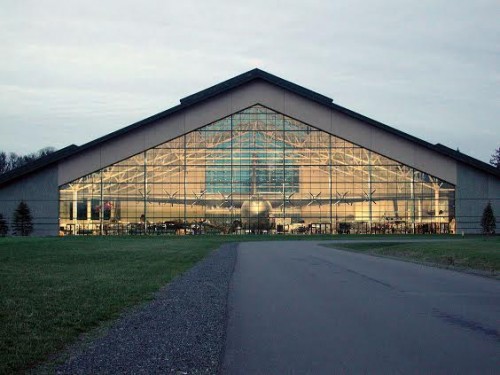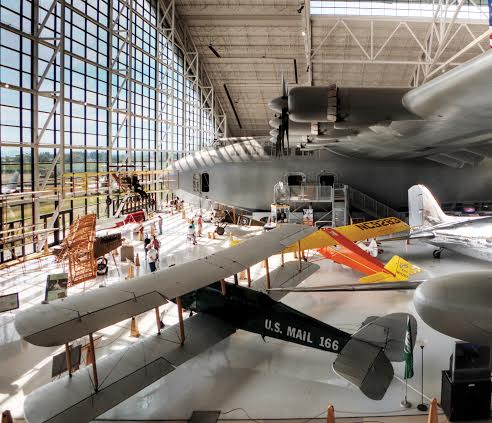In McMinnville, Ore., the financial troubles of a private aviation services company are causing big headaches for the museum that is home to Howard Hughes’ H-4 Hercules, the flying boat better known as the Spruce Goose.
On Dec. 31, Evergreen International Airlines, a subsidiary of troubled Evergreen International Aviation, filed a petition for Chapter 7 bankruptcy. The possible demise of the cargo carrier has tourists, aviation buffs and many in the museum world concerned about the fate of the affiliated Evergreen Air & Space Museum.
In Oregon’s wine country, about 40 miles southwest of Portland, the museum welcomes about 150,000 visitors a year. The collection includes everything from a Lockheed SR-71 Blackbird to a Boeing B-17 Flying Fortress.
But the centerpiece of the collection is undoubtedly the original Spruce Goose.
Built primarily of lightweight birch because of World War II restrictions on metals, the airplane has the world’s largest wingspan (320 feet) and made its only flight—of less than a mile—on Nov. 2, 1947, with Hughes himself at the controls. It then was put in storage.
During the 1980s, the craft was displayed under a dome in Long Beach, Calif., next to the Queen Mary cruise ship. Disney briefly managed that money-losing complex. In the early 1990s, however, the Spruce Goose was shipped to Oregon in pieces and reassembled inside a new building at the Evergreen Aviation & Space Museum.
Although an Oregon Department of Justice investigation is underway into possible inappropriate commingling of company and museum funds, officials at the museum have issued statements reassuring the public that the artifacts, especially the Spruce Goose, are safe; that the museum is an independent, financially stable nonprofit; and that, with its adjacent aviation-themed water park, it remains open for business.
Still, “there has been some confusion,” said Judiaann Woo, director of global communication at Travel Oregon.
“People just hear a bit of the story and think, ‘Oh, that’s closed. Let’s go somewhere else,’ ” she said. “But this is a major attraction that people from all over the world come to see, so we want to make sure the public knows it’s still there.”
Others in the aviation and museum world feel the same way.
“This is the museum that stepped up to save the Spruce Goose at a time when one of the possibilities was for it to be cut up and pieces of it sent all over the world,” said James Kidrick, president and CEO of the San Diego Air & Space Museum.
He considers a visit to the Spruce Goose to be “one of those boxes you’d want to check off if you have an interest in science, space, aviation and things that made this nation great,” he said. He hopes the museum does not suffer too much negative fallout from the financial woes of Evergreen International Aviation.
If it does, it won’t be the first—or the last—museum to stumble.
“We do hear of museums having difficulty, and many small museums have closed throughout the years,” said Ford Bell, president of the American Alliance of Museums. “But rarely is it one with a major collection like the one in McMinnville.”
But it does happen. In December, financial problems forced the Higgins Armory Museum in Worcester, Mass., to close after 83 years of operation. It housed one of the world’s important collections of arms and armor.
Most of its treasures are being transferred to the Worcester Art Museum and will remain accessible to the public, but “the concern we have when a museum is in financial trouble is for the collection,” Bell said. “We don’t want collections to disappear and become inaccessible to the public.”
And most communities don’t want a local museum to close its doors.
“Museums are tremendously important economic engines for their communities,” Bell said. “So in the case of the Evergreen Aviation & Space Museum in Oregon, I would encourage people to go visit it now and hope that they figure out a way to make sure it remains viable.”
(My story about the Evergreen Aviation & Space Museum first appeared on CNBC Road Warrior)

